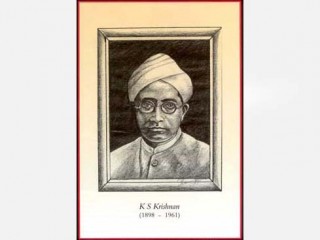
K. S. Krishnan biography
Date of birth : 1898-12-04
Date of death : 1961-06-14
Birthplace : Watrap, India
Nationality : Indian
Category : Science and Technology
Last modified : 2010-05-31
Credited as : Physicist and philosopher, ,
1 votes so far
Later, one eminent physicist remarked, “He quoted extensively from A.N. Whitehead (the great English mathematician and philosopher) and it was his speech that prompted me to read some of whitehead’s writings.”
Krishnan was more than a scientist. He was a physicist-philosopher as well versed in Sanskrit, English and Tamil literature as in physics.
Kariamanikkam Srinivasa Krishnan was born on December 4, 1898, in Tamilnadu. After receiving his basic education in Madras, he went to Calcutta in 1920 to do research. Here he joined the Indian Association for Cultivation of Science to work under C.V. Raman in the field of optics. It is said that he was partly responsible for the discovery of the “Raman Effect.” In 1948, he became the first Director of the National Physical Laboratory in New Delhi.
“Physics mean facing facts,” Krishnan always told his students. His contributions to physics are in diverse fields. Everyone must have seen the beautiful, regular pattern in crystals. The pattern is due to the arrangement of atoms or molecules. Different patterns arise from different arrangements. Solid state physics is the study of such arrangements in any solid and the various phenomena occurring in them. Krishnan studied the fine arrangements in various solids and the forces between atoms or molecules that keep them so.
Another subject to which he made significant contributions is thermionics, the study of electrons emitted by a hot bady, their behaviour and control. He also studied how heat is distributed in solids of various shapes, namely rods and coils, when heated in a vacuum. This has wide industrial applications.
Krishnan received several honours and was elected Fellow of the Royal Society in 1940. He died in 1961.
















